From the Trenches
Under the Rug
By JARRETT A. LOBELL
Tuesday, August 11, 2015
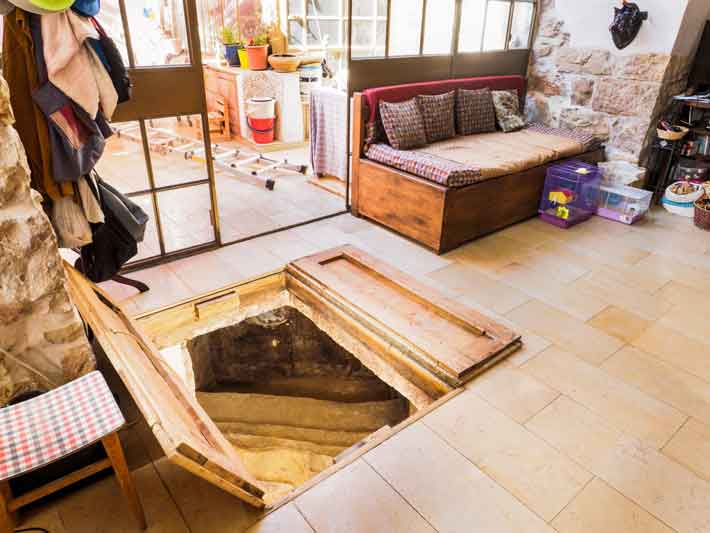 A family in Jerusalem has given new meaning to the idea that you never know what you’ll find when you move the sofa. The Israel Antiquities Authority (IAA) has released details of the surprising discovery of a ritual bath, or mikveh, under a set of wooden doors covered by a rug in the living room of a home in the neighborhood of Ein Kerem. The large mikveh, which is reached by a stone staircase, was carved from bedrock and covered in plaster some 2,000 years ago, according to the dating of pottery and fragments of stone vessels found inside. According to IAA archaeologist Amit Re’em, archaeological remains are rare for this period in this neighborhood of Jerusalem, and the discovery of the mikveh will add new knowledge to scholars’ understanding of the city’s development in antiquity.
A family in Jerusalem has given new meaning to the idea that you never know what you’ll find when you move the sofa. The Israel Antiquities Authority (IAA) has released details of the surprising discovery of a ritual bath, or mikveh, under a set of wooden doors covered by a rug in the living room of a home in the neighborhood of Ein Kerem. The large mikveh, which is reached by a stone staircase, was carved from bedrock and covered in plaster some 2,000 years ago, according to the dating of pottery and fragments of stone vessels found inside. According to IAA archaeologist Amit Re’em, archaeological remains are rare for this period in this neighborhood of Jerusalem, and the discovery of the mikveh will add new knowledge to scholars’ understanding of the city’s development in antiquity.
Blood on the Ice
By ZACH ZORICH
Tuesday, August 11, 2015
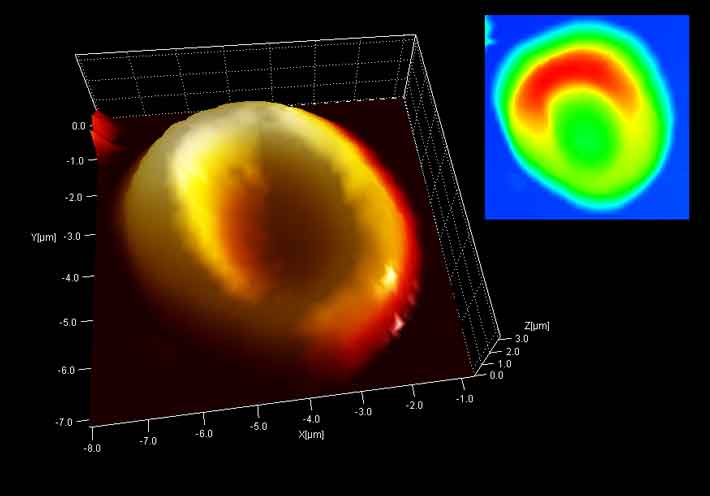 Some 5,300 years ago, a man now known as Ötzi died high in the Tyrolean Alps from an arrow wound to his chest. Now German and Italian researchers have recovered two intact red blood cells from the arrow wound and another corpuscle from a wound on his hand. The blood cells appear normal—even after five millennia under a glacier. They are the oldest known intact cells ever recovered from a mummy. The discovery opens the way to analyze Ötzi’s blood for diseases and to understand his general state of health. The researchers have now moved on to the contents of Ötzi’s stomach.
Some 5,300 years ago, a man now known as Ötzi died high in the Tyrolean Alps from an arrow wound to his chest. Now German and Italian researchers have recovered two intact red blood cells from the arrow wound and another corpuscle from a wound on his hand. The blood cells appear normal—even after five millennia under a glacier. They are the oldest known intact cells ever recovered from a mummy. The discovery opens the way to analyze Ötzi’s blood for diseases and to understand his general state of health. The researchers have now moved on to the contents of Ötzi’s stomach.
The Red Lady of El Mirón
By DANIEL WEISS
Tuesday, August 11, 2015
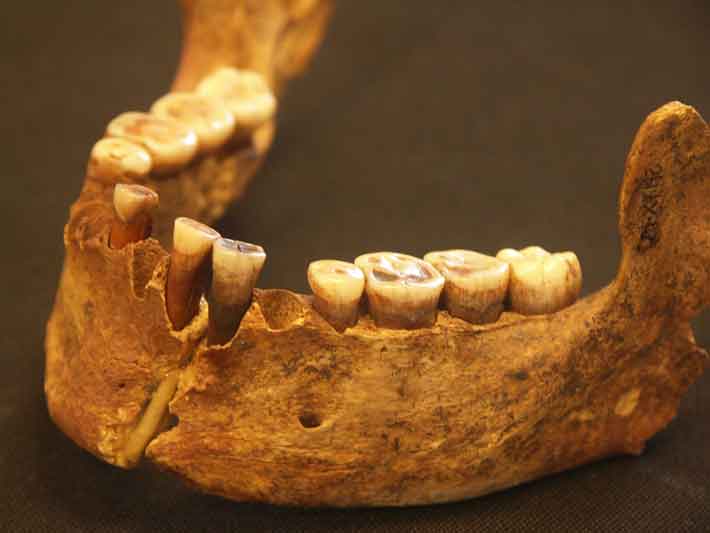 A team of archaeologists scoured El Mirón Cave in northern Spain starting in 1996 and found abundant remains of prehistoric people, primarily the Magdalenians, hunter-gatherers who lived across Western Europe at the end of the last Ice Age. But it wasn’t until 2010, when they investigated a narrow space behind a large limestone block, that the cave began to reveal its greatest secret: a significant portion of the skeleton of a Magdalenian woman who had died around 18,700 years earlier at the age of 35 to 40.
A team of archaeologists scoured El Mirón Cave in northern Spain starting in 1996 and found abundant remains of prehistoric people, primarily the Magdalenians, hunter-gatherers who lived across Western Europe at the end of the last Ice Age. But it wasn’t until 2010, when they investigated a narrow space behind a large limestone block, that the cave began to reveal its greatest secret: a significant portion of the skeleton of a Magdalenian woman who had died around 18,700 years earlier at the age of 35 to 40.
The team, led by Lawrence Straus of the University of New Mexico and Manuel González Morales of the University of Cantabria, found that the woman’s bones were coated with ochre, a red, iron-based pigment, earning her the moniker the “Red Lady of El Mirón.” Her skull and most of her long bones were missing, but a group of researchers led by José Miguel Carretero of the University of Burgos found that her skeleton was otherwise mostly intact, suggesting she had been buried there. “This is the first more-or-less substantial human skeleton of the Magdalenian culture found in the entire Iberian Peninsula,” says Straus.
The limestone block next to the Red Lady’s burial spot has a large number of engravings on its outer face dating to around the time she died, including several that form a distinctive “V” shape, possibly meant to represent a female pubic triangle and to indicate that a woman had been buried nearby. In addition, the inner side of the block adjacent to the burial site was covered with ochre. “You could speculate that the block may have been a marker of her grave,” says Straus.
The researchers are unsure why such apparent effort was expended on the Red Lady after her death. “Whoever she was,” says Straus, “she was given special treatment that was different from the norm. We don’t know what the Magdalenians normally did with their bodies, but by and large they were not burying them.”
For the Love of a Noblewoman
By ERIC A. POWELL
Tuesday, August 11, 2015
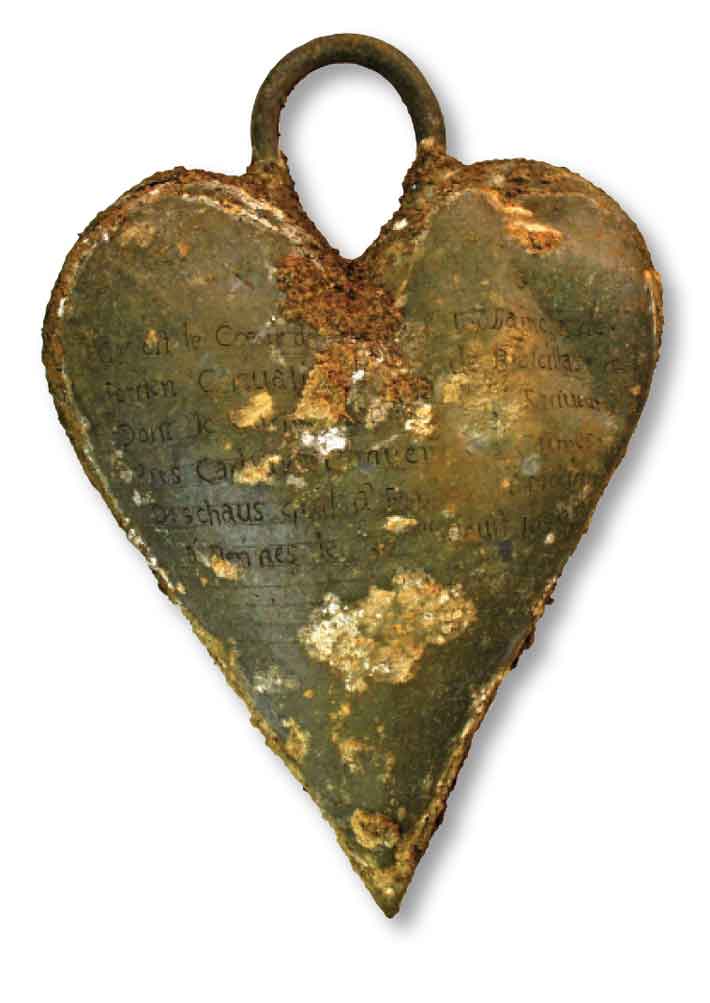 The remarkably well preserved, fully dressed body of a seventeenth-century noblewoman has been found in a lead coffin in the French city of Rennes. A team led by Rosenn Colleter of the French National Institute of Preventive Archaeological Research (INRAP) made the discovery while excavating the remains of a fourteenth-century convent at the site of a future conference center. Along with some 800 graves, the archaeologists unearthed five lead coffins, one of which was still hermetically sealed and held the nearly intact body. “I knew at once that it was a beautiful discovery,” says Colleter, “and that we would need to work quickly so as not to lose any information to decomposition.”
The remarkably well preserved, fully dressed body of a seventeenth-century noblewoman has been found in a lead coffin in the French city of Rennes. A team led by Rosenn Colleter of the French National Institute of Preventive Archaeological Research (INRAP) made the discovery while excavating the remains of a fourteenth-century convent at the site of a future conference center. Along with some 800 graves, the archaeologists unearthed five lead coffins, one of which was still hermetically sealed and held the nearly intact body. “I knew at once that it was a beautiful discovery,” says Colleter, “and that we would need to work quickly so as not to lose any information to decomposition.”
The woman was buried with a heart-shaped relic inscribed with her husband’s name and containing his heart. This allowed the team to identify her as Louise de Quengo, Lady of Brefeillac, who died in 1656. The unusually complete state of de Quengo’s body and clothing is giving specialists a new look at French aristocratic burial practices of the time.
Laboratory analysis of the remains will allow researchers to reconstruct the pathogens she carried, including tuberculosis. “It’s rare that you are able to give a seventeenth-century person a comprehensive health check,” says Colleter. The Lady of Brefeillac will be reburied later this year.
Early Parrots in the Southwest
By ERIC A. POWELL
Tuesday, August 11, 2015
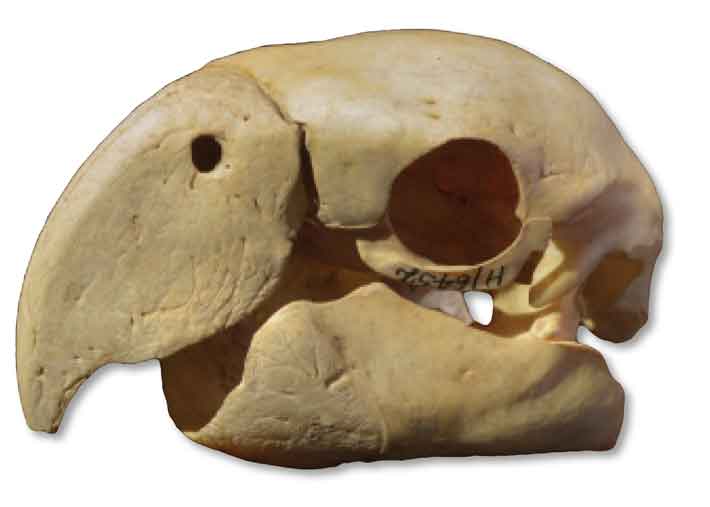 In the prehistoric American Southwest, trade with distant Mesoamerica was a source of power and prestige that could make or break a ruler. Within the massive multistory buildings at New Mexico’s Chaco Canyon, for instance, archaeologists have discovered exotic goods from Mexico, such as cacao and the remains of 33 scarlet macaws, whose natural habitat is 1,000 miles away on the Gulf of Mexico. Scholars had assumed that long-distance trade became important only during the period when Chaco’s power was greatest, from A.D. 1040 to 1110. But now a team has dated the macaw bones and found that some were imported as early as A.D. 900.
In the prehistoric American Southwest, trade with distant Mesoamerica was a source of power and prestige that could make or break a ruler. Within the massive multistory buildings at New Mexico’s Chaco Canyon, for instance, archaeologists have discovered exotic goods from Mexico, such as cacao and the remains of 33 scarlet macaws, whose natural habitat is 1,000 miles away on the Gulf of Mexico. Scholars had assumed that long-distance trade became important only during the period when Chaco’s power was greatest, from A.D. 1040 to 1110. But now a team has dated the macaw bones and found that some were imported as early as A.D. 900.
“I was very much surprised,” says American Museum of Natural History archaeologist Adam Watson, who helped organize the dating. “I, along with everyone else, assumed the trade networks with Mexico didn’t become important until Chaco expanded. Now we have evidence that control over trade and political power were being consolidated long before then.”
Advertisement
Advertisement
IN THIS ISSUE
Features
Golden House of an Emperor
New York's Original Seaport
Cultural Revival
Letter From England
From the Trenches
Bronze Age Ireland’s Taste in Gold
Off the Grid
A Rare Bird
Atacama’s Decaying Mummies
Bronze Age Traveler
Great Lakes Shipwreck Spotting
Early Parrots in the Southwest
The Red Lady of El Mirón
For the Love of a Noblewoman
Blood on the Ice
Under the Rug
What’s in a Name?
A Place to Hide the Bodies
“T” Marks the Spot
As American as Sliced Bacon in a Can
Surely You Joust?
Artifact
The dragon that guarded Xanadu
Advertisement

Recent Issues
-
 May/June 2024
May/June 2024
-
 March/April 2024
March/April 2024
-
 January/February 2024
January/February 2024
-
 November/December 2023
November/December 2023
-
 September/October 2023
September/October 2023
-
 July/August 2023
July/August 2023
-
 May/June 2023
May/June 2023
-
 March/April 2023
March/April 2023
-
 January/February 2023
January/February 2023
-
 November/December 2022
November/December 2022
-
 September/October 2022
September/October 2022
-
 July/August 2022
July/August 2022
-
 May/June 2022
May/June 2022
-
 March/April 2022
March/April 2022
-
 January/February 2022
January/February 2022
-
 November/December 2021
November/December 2021
-
 September/October 2021
September/October 2021
-
 July/August 2021
July/August 2021
-
 May/June 2021
May/June 2021
-
 March/April 2021
March/April 2021
-
 January/February 2021
January/February 2021
-
 November/December 2020
November/December 2020
-
 September/October 2020
September/October 2020
-
 July/August 2020
July/August 2020
-
 May/June 2020
May/June 2020
-
 March/April 2020
March/April 2020
-
 January/February 2020
January/February 2020
-
 November/December 2019
November/December 2019
-
 September/October 2019
September/October 2019
-
 July/August 2019
July/August 2019
-
 May/June 2019
May/June 2019
-
 March/April 2019
March/April 2019
-
 January/February 2019
January/February 2019
-
 November/December 2018
November/December 2018
-
 September/October 2018
September/October 2018
-
 July/August 2018
July/August 2018
-
 May/June 2018
May/June 2018
-
 March/April 2018
March/April 2018
-
 January/February 2018
January/February 2018
-
 November/December 2017
November/December 2017
-
 September/October 2017
September/October 2017
-
 July/August 2017
July/August 2017
-
 May/June 2017
May/June 2017
-
 March/April 2017
March/April 2017
-
 January/February 2017
January/February 2017
-
 November/December 2016
November/December 2016
-
 September/October 2016
September/October 2016
-
 July/August 2016
July/August 2016
-
 May/June 2016
May/June 2016
-
 March/April 2016
March/April 2016
-
 January/February 2016
January/February 2016
-
 November/December 2015
November/December 2015
-
 September/October 2015
September/October 2015
-
 July/August 2015
July/August 2015
-
 May/June 2015
May/June 2015
-
 March/April 2015
March/April 2015
-
 January/February 2015
January/February 2015
-
 November/December 2014
November/December 2014
-
 September/October 2014
September/October 2014
-
 July/August 2014
July/August 2014
-
 May/June 2014
May/June 2014
-
 March/April 2014
March/April 2014
-
 January/February 2014
January/February 2014
-
 November/December 2013
November/December 2013
-
 September/October 2013
September/October 2013
-
 July/August 2013
July/August 2013
-
 May/June 2013
May/June 2013
-
 March/April 2013
March/April 2013
-
 January/February 2013
January/February 2013
-
 November/December 2012
November/December 2012
-
 September/October 2012
September/October 2012
-
 July/August 2012
July/August 2012
-
 May/June 2012
May/June 2012
-
 March/April 2012
March/April 2012
-
 January/February 2012
January/February 2012
-
 November/December 2011
November/December 2011
-
 September/October 2011
September/October 2011
-
 July/August 2011
July/August 2011
-
 May/June 2011
May/June 2011
-
 March/April 2011
March/April 2011
-
 January/February 2011
January/February 2011
Advertisement






